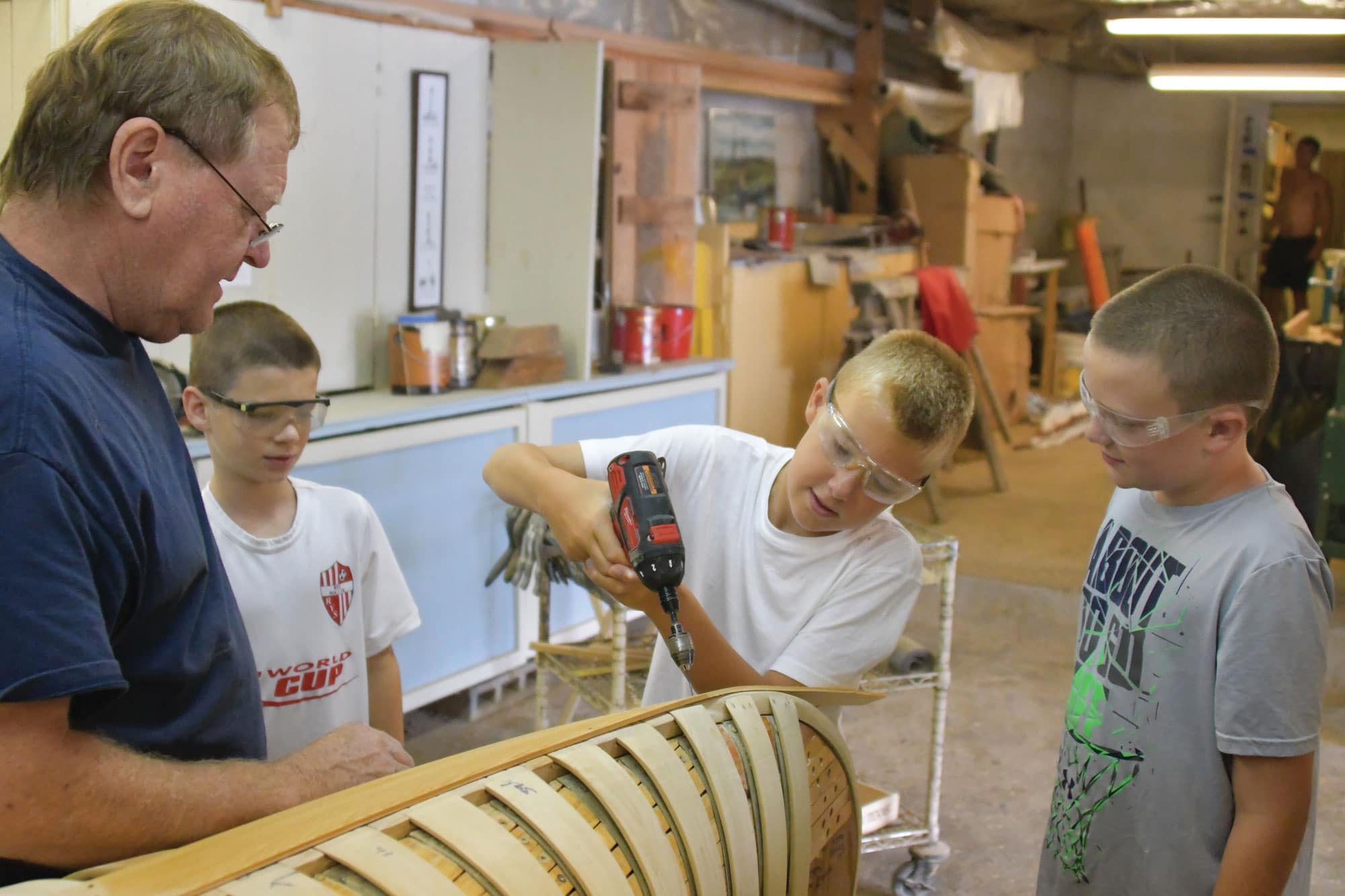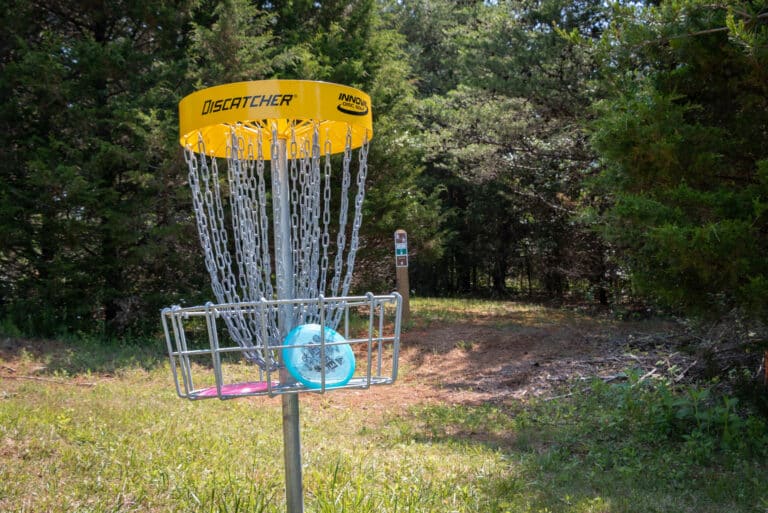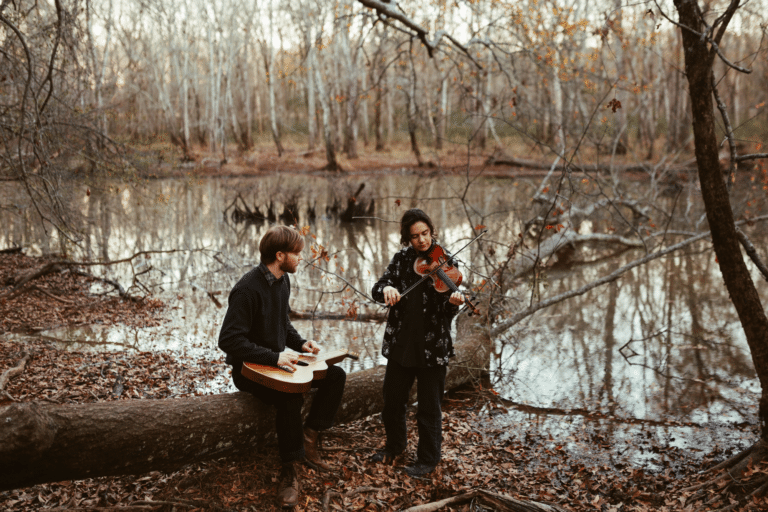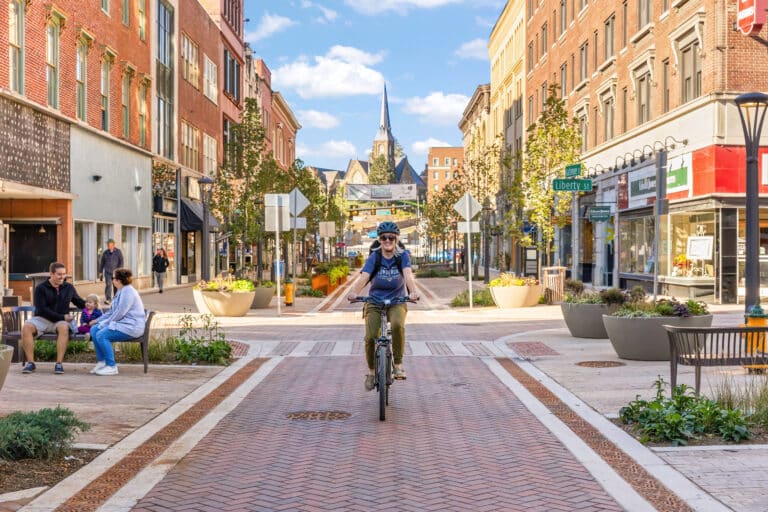Camp Mondamin in North Carolina fosters some of the best paddling talent in the South and teaches campers how to build canoes.
On the back counter of the workshop is a smudgy, dust-covered glass box. While it could use a scrub, the dirtiness symbolizes a job well done: keeping grime off of the box’s tenant, a model Spanish Galeon ship. The boat, roughly two-feet long, sails only through time, but with the innate presence passed down from its royal ancestry. Jeff Schlosser keeps the model in his canoe workshop as a monument to the process at hand.
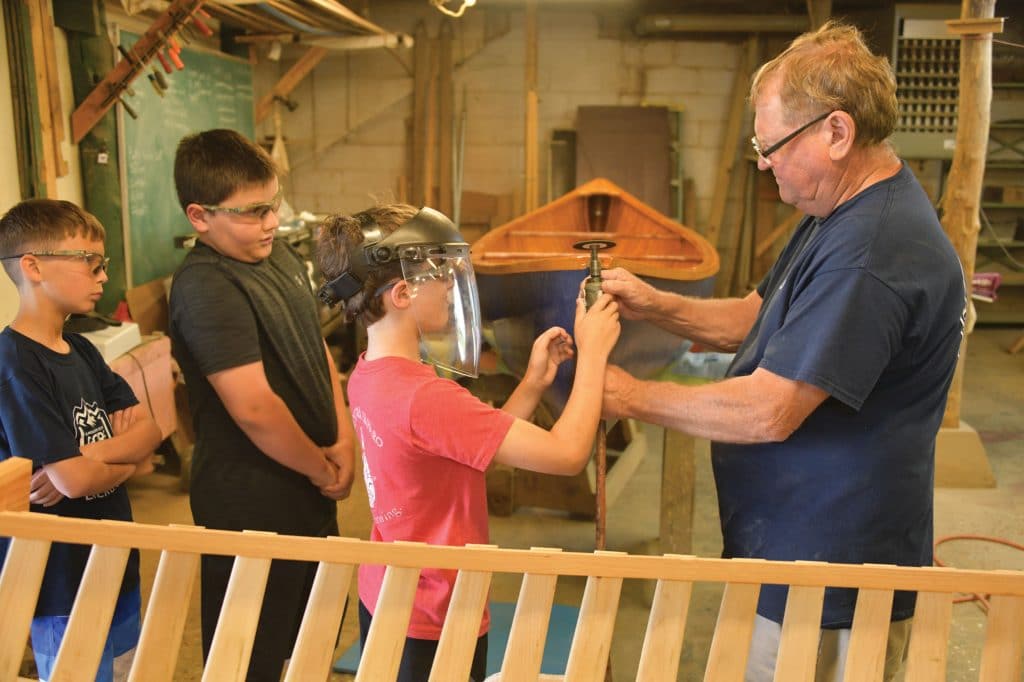
“Just a giant version of these canoes,” says Schlosser, looking down at his model. “Where we use [a] 3/8-inch piece of cedar for a rib, they would use whole trees, 120-feet tall, and they’d square them and then bend them.”
This summer will be the 100th for Camp Mondamin, a boys’ camp located on Lake Summit in Tuxedo, N.C. Storied in the Southern boating scene, the camp boasts several whitewater Olympians (Lecky and Fritz Haller, Jamie McEwan, John Burton, and Matt Taylor) and National team members (Gordon Grant, Barry Kennon, Steve Holmes, and Dave Hepp) among its alumni, and a walk around the property serves as a historical tour of its paddling lineage. There are 90-year-old Old Towns, an original fiberglass mold, and a multitude of one-off boats of seemingly every variation, but there is also a growing fleet of new 16-footers, built right here on the premises by Mondamin campers under Schlosser’s guidance.
In the early aughts, Mondamin’s then-Maintenance Director Ken Roberts decided it would be easier to build new canoes rather than repairing the damages accumulating on the camp’s collection of ancient Old Towns. He approached David Bell, whose grandfather, Chief, founded the camp and whose father, Frank, was then the camp’s director, with the idea.
“David was like, ‘Really? How would we do that?’ and the two of them started putting together this program, talking to some of the manufacturers up in Maine,” remembers Andrew Bell, David’s brother and the current camp director. “Northwoods Canoe is one that we have used as a resource a lot throughout the years. So, David and Ken put together this program and built by hand a mold and kind of figured out the process. They were doing repairs as well as starting to teach campers how to build boats. We were maybe building one boat in a summer at that point.”
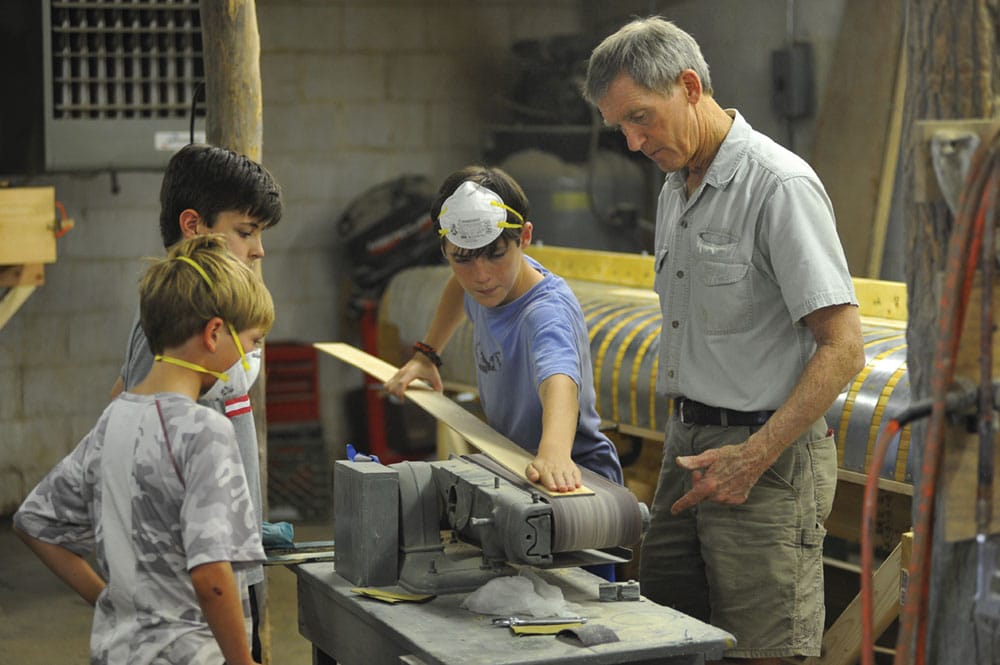
The first boat that Roberts and David Bell built is now hanging in Black Dome Mountain Sports North Carolina Canoeing Museum, but while the framework for the ambitious program was trailblazing, the boats being produced left room for improvement. The rounded bottoms made them tippy, and they were too short bow-to-stern. When Roberts retired a few years later and David Bell left to pursue other opportunities, Frank Bell hired local carpenter Perry White to oversee the program. White had no experience building or repairing canoes, but was a familiar name in summer camp circles, an experienced woodworker, and eager to learn.
“He started talking to some of these canoe companies like Northwoods and really, over time, in my opinion, became one of the most knowledgeable people about building and repairing canoes,” says Andrew Bell. “There aren’t many positions where you can, year-round, work on canoes, but we had enough repair work that he stayed in the boat shop through the winter and did repairs, then built new canoes in the summer with the kids.”
White oversaw the production of boats with flatter bottoms, guiding campers through the entire process from sawing the wood and steaming ribs to canvassing the body and painting the exterior. The shop went from generating a boat per summer to three.
“What Perry really did was get the kids building it,” explains Bell. “Perry was fantastic at just kind of sitting back and talking to the kids, teaching them how to do it and letting them do it. I think that was where he really flourished, and he had the knowledge to be able to explain it and have them understand and get the product he wanted and a lot of it was because he was talking to those companies and really getting feedback so he could understand it himself.”
White was diagnosed with terminal cancer in 2015 and passed away the following year. Aside from the grief of losing his friend, Bell also had to figure out a way to keep the boat shop going. Jeff Schlosser had spent a single summer on Mondamin’s maintenance team in 2004, a brief stopover amid his decades-long career as a NASCAR body fabricator, working on cars driven by Jimmie Johnson, Dale Earnhardt Jr., and Jeff Gordon. Between 2006 and 2016, Schlosser’s cars won seven NASCAR championships. He was at the pinnacle of the sport, but the hours were long and laborious, and the commute from his homestead near Mondamin to the garage in Charlotte was too much. In 2016 he decided to return to Mondamin for good.
He rejoined the maintenance team for the winter months and agreed to become the new leader of the boat shop during the summers. Like White, Schlosser had no prior experience building canoes. Schlosser apprenticed under White during his final summer “on his good weeks between chemotherapy,” creating a sourdough starter effect.
“The building process is set in stone basically, but what I learned from Perry was reading wood, and that is the ultra-important thing because we are bending wood, and if you try to go against the grain, you aren’t going to succeed,” says Schlosser.
Schlosser estimates that Mondamin campers are responsible for roughly 75 percent of the building process for each boat. Those who help in the construction sign their names to the wood before the boat is canvassed. The camp does not use the boats on any of its river trips, only for stroke lessons on the lake, but the homemade canoes remain the favorites of campers.
“Knowing that your name is on it, and it’s going to be around for a very long time, because these boats are built to last, it’s just a wonderful feeling,” says Bell. “To know that they will be around camp or the camp community is very powerful.”
Along with the model Galeon, Schlosser’s shop is filled with an assortment of wood scraps, in-progress boats, and tools. His work station is adorned with NASCAR decals, and above the sliding door is a picture of a World War I Sopwith Camel airplane. The plywood Camel’s wings were canvassed similarly to the boats built in this shop, he explains. On a chalkboard at the edge of the room is a diagram of a canoe, each part labeled with its variation of wood identified in parenthesis: the gunwales are ash or fir, the ribs and planks are cedar, the deck plates and thwarts are oak.
Within the first few pages of John McPhee’s “The Survival of the Bark Canoe,” the author quotes the story’s subject, Henri Vaillancourt, on the joy he experienced while paddling the first boat he ever built himself.
He is lyrical in describing that day and the feel of the canoe’s momentum and response. “The first canoe I ever got into was one of my own. I can launch the best ones now and they don’t thrill me one-tenth as much. It was the glide, the feel of it, just the sound as it rustled over the lily pads.”
Later Schlosser is asked what his favorite part of the process is. “I get satisfaction when they launch,” he says with a grin.
Cover photo: Storied in Southern boating, Mondamin has hosted several campers that have gone on to become Olympic paddlers. Photo courtesy of Camp Mondamin
